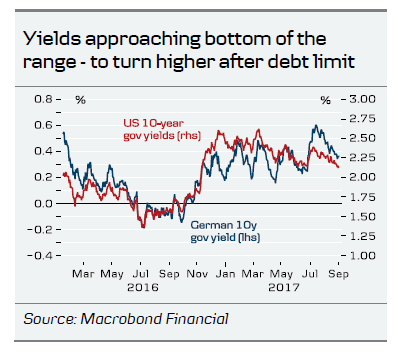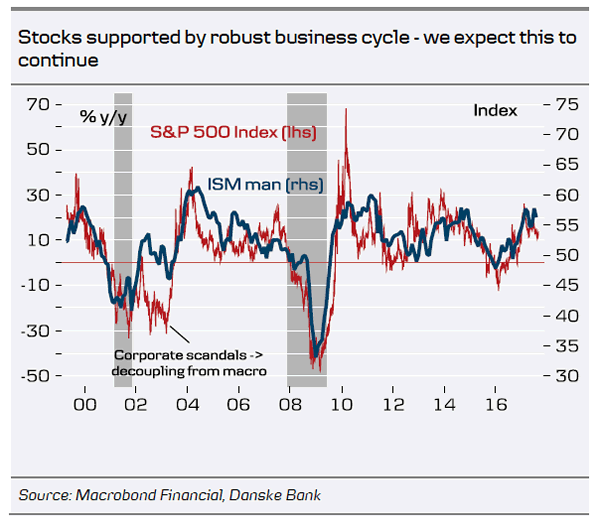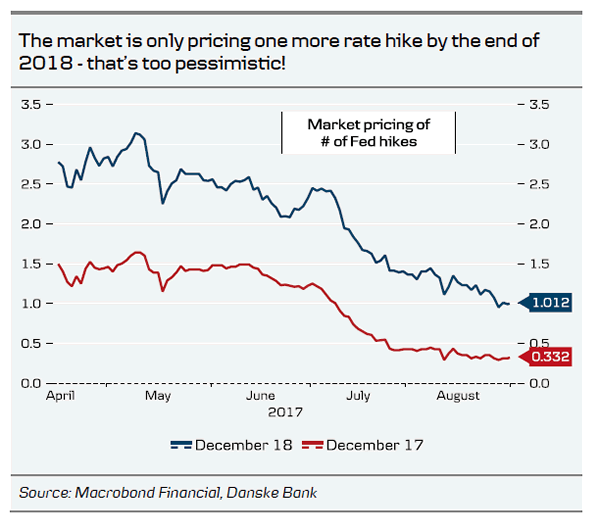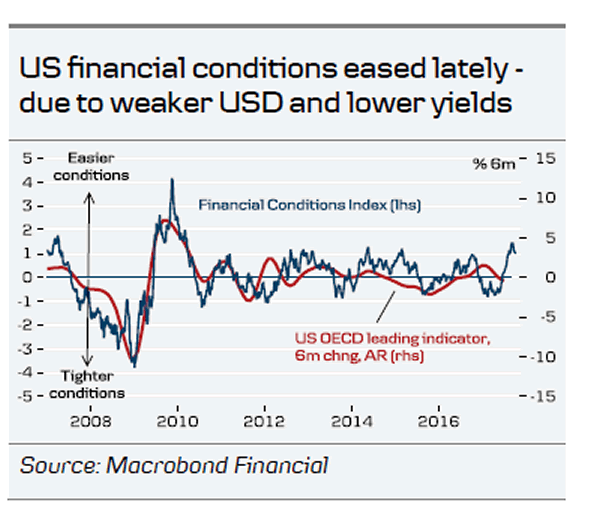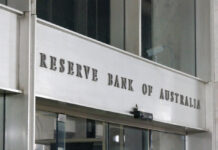While the global macro backdrop is looking good as we near the end of Q3, event risks have returned to markets after being away for some time.
- First, the crisis with North Korea escalated this week with Pyongyang’s launch of a missile that flew over Japan to land in the Pacific.
- Second, the deadline for the US debt limit is getting closer and is only a little more than one month away. A government shutdown is also a risk unless a new budget is agreed by the end of September.
- Third, Hurricane Harvey has become stronger than estimated and is likely to make a small dent in US activity in the very short term.
The increased uncertainty has overshadowed the robust growth picture and sent both equity markets and bond yields lower this week. On the other hand, it has not stopped metal prices from continuing the recent surge – a sign that Chinese growth is rebounding ahead of the 19th National Congress of the Communist Party of China, which takes place this autumn.
What should we make of the above event risks? The short answer is that they are likely to keep a lid on risk appetite in the short term. However, as we do not expect these risks to have a material impact on the global economy, the effects on markets should also prove temporary – and equities and bond yields should eventually recover.
On the first point, the North Korean crisis has turned into a Gordian Knot, with no easy solution but still, given the grave consequences of a war on the Korean Peninsula, the probability of military conflict is in our view low. US president Donald Trump responded to Kim Jong Un’s provocation by repeating the phrase that ‘all options are on the table’, indicating that a military strike against North Korea is possible. However, it does not seem like a credible threat. A military strike comes with the risk of a fierce retaliation with significant casualties in South Korea. The capital Seoul, with 10 million people, is less than 50km from the border with North Korean and North Korea has a significant arsenal of both conventional and chemical weapons.
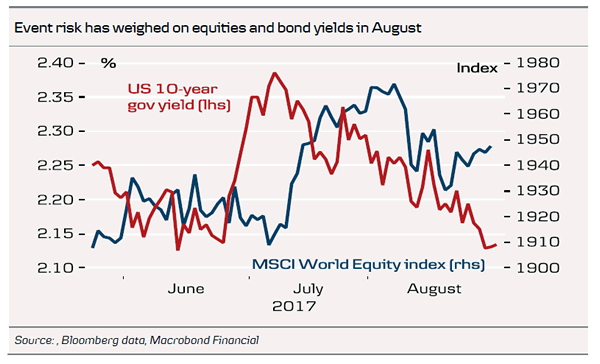
Then there is the risk from nuclear weapons. Kim Jong Un may act as crazy and unpredictable as possible (‘mad man’ theory) to make retaliation look credible even if he knows that any attack on South Korea would have devastating consequences for his country – and probably himself. Continued waves of escalation seem likely to us but war does not. Kim Jong Un’s latest missile test came partly as a response to annual military exercises in August, with 17,500 US soldiers participating in 10-day war games with the South Korean army. Hence, once these exercises are over, we could see some calm restored. If things calm down again, this should give some support to risk assets.
Debt limit deadlock keeps lid on risk appetite short term
On the issue of the debt limit, we may have to be a bit patient before a solution is on the table. The experience with deadlocked political negotiations is unfortunately that they run until the very last minute and often things look very dire right ahead of the deadline. If this pattern repeats itself, risk appetite may stay subdued until we get to the ‘other side’ in early October. We see the probability of a failure to raise the debt limit as very small. In our view, too much is at stake. US rating agency S&P warned this week that failure by Congress to raise the debt limit would be likely to be ‘more catastrophic’ than the failure of Lehman Brothers in 2008. This may be too gloomy but the consequences could be serious, as a default on a US bond would entail a downgrade of US debt and risk causing a recession. The US Treasury Secretary has said that Congress needs to raise the ceiling by 29 September but we expect the so-called X date – the ultimate deadline – to be some day in the first two weeks of October. While the probability of failure is low, the impact would be very high. Thus, we expect equity investors to stay on the sidelines until a deal is struck.
Bond yields low short term – up in Q4
It also means that bond yields are likely to remain low for now. However, we still see a range-trading environment for 10-year US bond yields for the rest of the year and as we are in the low end of the range currently, we look for higher yields once we get the relief rally in risk assets when a deal on the debt limit is struck.
We also still expect the Fed to raise rates again in December, which would give a push up from the short end of the yield curve, as the probability of a December hike is still priced with only 30% probability. While core inflation is likely to remain low in the short term, we expect growth and employment to stay solid.
This should keep the Fed on its cautious hiking path, as the Fed expects a continually tightening labour market to push up inflation in the longer term. US financial conditions have also eased quite a bit lately from the lower bond yields and weaker USD. Hence, a Fed hike would moderate only some of the financial easing that has taken place in the market.
Could the negative effects of Hurricane Harvey spoil this? We do not believe so. First, the history from previous big hurricanes such as Hurricane Katrina in 2005 and so-called Superstorm Sandy in 2012 shows that any negative impact is short-lived and if anything the rebuilding afterwards will give a small lift. Second, estimates of the damage so far put the cost of Harvey around USD30-40bn and thus lower than both Katrina (USD160bn) and Sandy (USD70bn). The hurricane may pull forward the date that the debt ceiling is reached into late September but we still expect the deal to come last minute.
Rising EUR/USD trend here to stay – buy on dips
EUR/USD has shown a strong uptrend over the past few months, reaching a new cycle high this week around 1.20. While the cross has corrected slightly this week, we expect the uptrend to continue and recommend a buy-on-dips strategy. We expect EUR positive forces to continue over the coming year: strong positive flows related to the beginning of an ECB exit next year and a big current account surplus (see FX Edge: Power of flows, 23 August) and still attractive valuation on our medium term models. There are a few shortterm positives for the USD, as positioning is now quite long EUR and short USD. Also, a Fed hike in December would be likely to be USD positive. Tighter USD liquidity could also benefit the USD (see FX Edge: The return of USD scarcity, 29 August). However, we do not look for a big correction and expect EUR/USD to trade in a range of 1.15-1.20 on a 1-3M horizon. At the same time, we believe any decline should be used to position for a further move up in EUR/USD on a 6-12M horizon
